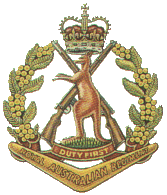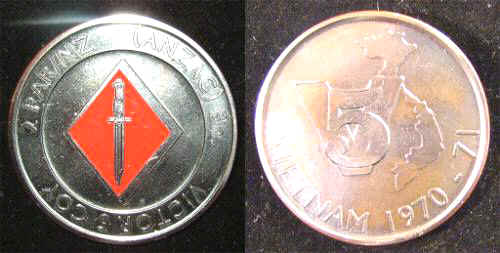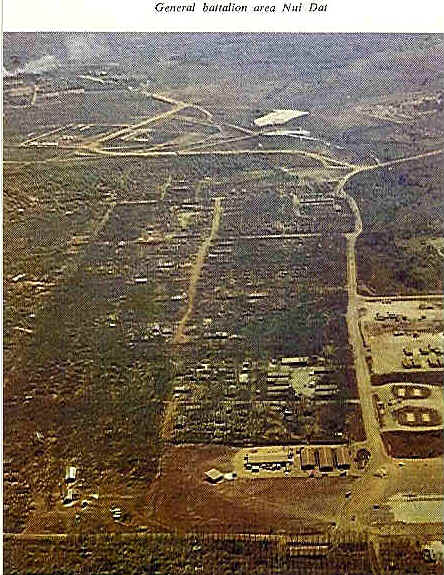 |
|
| Raised | ||
| Battalion colour |
Black (BCC 220) |
|
| Battalion nickname | Second to none | |
| Battalion marches |
Ringo |
|
| Current home | ||
| Mascot |
|
Tours of duty overseas. |
|
| Japan | See below |
| Korea | See below |
| Malaya | See below |
| Viet Nam | |
| East Timor | |
| Ten years after this photograph was taken, in South Vietnam on 18 August 1966, whilst Officer Commanding D Company 6RAR, Major Smith commanded the Australians on the battlefield at Long Tan. Major McFarlane, Officer Commanding C Company 6RAR, was nearby at the time, his company holding the battalion's base during the battle, then leading the follow-up of the enemy on the next morning. Major Smith was awarded the Military Cross for his heroic stand against overwhelming odds at Long Tan. | |
 |
Vietnam. 1967. Members of 2nd Battalion, The Royal Australian Regiment (2RAR), examine webbing and weapons captured by the battalion during an operation. Holding the Russian AK-47 assault rifle is Sergeant Jules Bavell of Stafford Heights, Qld (centre), while Corporal Bob Hose of The Valley, Qld (right), displays an SKS Simonov rifle, and Private Ross Wilson of Punchbowl, NSW, holds captured Viet Cong webbing. |
 |
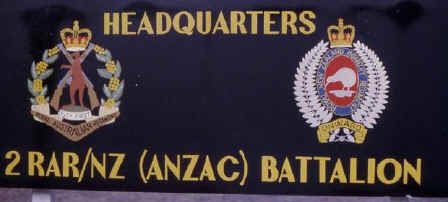 |
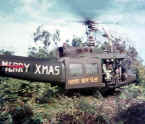 |
|
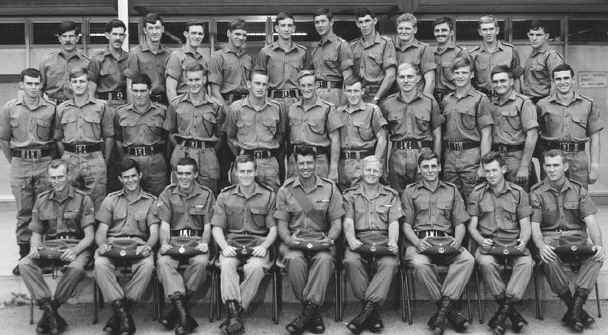 |
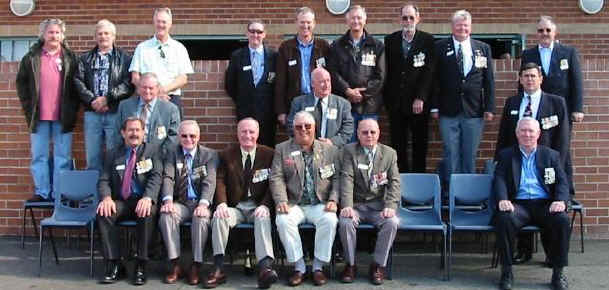 |
| Time and tide wait for no
man. Above 2Plt A Coy 2RAR (2nd tour). Below, in the same relative
positions, the older, wiser versions. Photos
by Ian Cavanough 2 Pl A Coy 2 RAR Vietnam 70/71 |
|
|
| Medallion put out by 5 Victor Company who served as part of 2 RAR/NZ (ANZAC) 1970/71 |
|
2nd Battalion Royal Australian Regiment in Korea |
| In 1945 Australia sent
three units to Japan as part of the British Commonwealth Occupation
Force (BCOF). Originally known as the 65th, 66th and 67th Infantry
Battalions, they were raised from Australian divisions stationed in New
Guinea at the end of the Second World War. On 23 November 1948, the
battalions were renamed the First, Second and Third Battalion, The
Australian Regiment, respectively. The prefix “Royal” was granted by
King George VI on 31 March 1949.
2RAR returned to Australia in 1948 and was stationed at Puckapunyal, Victoria, when the Korean War began in 1950. Some 2RAR members volunteered for service with 3RAR and 1RAR, as these two battalions saw service earlier than 2RAR. 2RAR was bought up to strength with volunteers that enlisted under the K Force recruiting campaign. The battalion trained for Korea at Puckapunyal. It embarked for Korea on 5 March 1953 on board MV New Australia, arriving in Korea on 17 March. It joined the Commonwealth Division on 21 March, replacing 1RAR at Camp Casey near Tongduchon, South Korea. 2RAR was primarily deployed in patrolling the no man’s land to the north of the UN lines. This involved making small advances, defending its position, capturing prisoners, collecting intelligence, and maintaining minefields and trenches. The work was monotonous and dangerous, with many casualties caused by mines. The conditions of this phase of the war, often referred to as the “static phase”, created an additional burden. In winter it was not uncommon for top temperatures to be below zero, and troops had to take precautions against frost-bite and trench foot. At the other extreme, summer was humid, with heavy rain that often flooded the trenches. Added to this were possible attacks from the enemy coupled with shell and mortar fire. 2RAR patrolled sections of the Jamestown line, in the area of the Imjin and Samichon Rivers. On 9–10 July 1953, 2RAR with 3RAR were given the task of holding the line to the west of the Samichon River. 2RAR was stationed on the left forward position of a hill that was commonly referred to as the “Hook”. On the night of 24 July 1953, the Chinese forces attacked 2RAR and a US Marine Regiment. The attack was launched in consecutive waves over the nights of both 24 and 25 July, with heavy artillery and mortar attacks during the day. 2RAR held firm against the assaults, and on the morning of the 26 July, the Chinese abandoned the attack. About 3,000 Chinese dead lay in front of the Hook. 2RAR had lost five killed and 24 wounded. The armistice came into effect at 10 pm the following evening. After the armistice, 2RAR was involved in training and border patrols. It was replaced by 1RAR in April 1954 and returned to Australia. Text by AWM
|
|
2nd Battalion Royal Australian Regiment in the Malayan Emergency |
| In 1945 Australia sent
three units to Japan as part of the British Commonwealth Occupation
Force (BCOF). Originally known as the 65th, 66th and 67th Infantry
Battalions, they were raised from Australian divisions stationed in New
Guinea at the end of the Second World War. On 23 November 1948, the
battalions were renamed the First, Second and Third Battalion, The
Australian Regiment, respectively. The prefix “Royal” was granted by
King George VI on 31 March 1949.
The Australian battalions sent to the Malayan Emergency formed part of the 28th Commonwealth Infantry Brigade Group (CIBG). CIBG was part of the British Commonwealth Far East Strategic Reserve (FESR). FESR comprised British, Australian and New Zealand troops. Australian officers commanded the Australian battalions in Malaya, although operations were part of a larger strategy, requiring co-operation between FESR units. Efforts were directed against the Communist terrorists. 2RAR arrived in Malaya on 19 October 1955. While in Malaya, the battalion was stationed at Minden Barracks, in the foothills on the eastern side of the island. Although Minden was the nominal home of the battalion while it was in Malaya, it rarely spent any length of time there. Operations through the jungle lasted for days or even weeks at a time, and breaks between operations were brief. When 2RAR arrived in Malaya, its participation in Malayan operations had not been approved by the Australian government. As a result, the battalion did not start operations until 1 January 1956. It began with Operation Deuce, a search and security operation in Kedah. It was typical of activities carried out by the battalion during the Emergency. These intense, lengthy patrols involved tracking the communists through the jungle. Often there was little or no result. The work was tiring, demanding, and monotonous. Deuce ended on 30 April, and responsibility for the area was handed over to the 1st Battalion of the Royal Malay Regiment. 2RAR was redeployed to Perak for Operation Shark North in early May. Shark North aimed at destroying the communist influence in the Kuala Kangsar and Upper Perak districts. On 22 June, a five-man patrol was ambushed by communists about 400 metres north of the Sungei Bemben reservoir. The noise of heavy fire drew other Australian patrols to the area, and after some contact, the communist ambush party dispersed. It was the most intense action Australians were engaged in during the Emergency, costing three dead and three wounded. It became known as the “pipeline ambush”. In mid February, 1957, the battalion withdrew from Shark North to take part in Operation Rubberlegs. This was a search mission in the narrow jungle salient in the Kuala Kangsar/Kinta districts. On 7 March the battalion returned to Perak and Operation Shark North. Operation Eagle Swoop took place as part of Shark North. Eagle Swoop was a search based on information provided by a surrendered terrorist. The purpose of the operation was to find a communist camp that had been operating on the Thai–Malay border. However, when the camp was discovered the terrorists had moved on. In August, 2RAR was withdrawn from operations in Perak and began “major warfare training” before its return to Australia. The battalion departed on 15 October. Text by AWM Casualties 14 killed, no wounded figures available Decorations 2 MBE 1 MC 3 MM 14 MID |
|
A Short History Of The 2nd Battalion, The Royal Australian Regiment |
||||
In May 1945 when the Japanese were nearing the point when defeat was
inevitable, the Australian Government decided that a force would be
raised of volunteers from the Infantry Divisions then in operations
against the enemy as part of the Occupation Forces in Japan.
Late in 1948 the three battalions were renamed 1st, 2nd and 3rd Battalions, the Australian Regiment, and with the winding down of the duties in Japan the 1st. Battalion and the 2nd Battalion returned to Australia in December, the 2nd Battalion to Puckapunyal, and the 1st. Battalion to Ingleburn. In March 1949 the Royal prefix was approved and the Battalions became the battalions of the Royal Australian Regiment. In those days, however, the 2nd
Battalion was a mere shadow of its former self with many members staying
in Japan with the 3rd Battalion and many others taking their discharge;
and it became a training battalion for new recruits to Infantry.
During the year 1967/68, the Battalion conducted or
took part in 23 major operations and numerous minor operations. It
returned to Townsville and gradually rebuilt till warned for service in
Vietnam where it landed in May 1970, conducting five major Battalion
operations and being involved in numerous combined operations again as
an ANZAC Battalion. Toombul 4012 Phone 07 3268 6375 |
